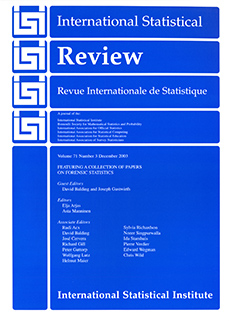Abstract
The bootstrap is a method for estimating the distribution of an estimator or test statistic by resampling one's data or a model estimated from the data. The methods that are available for implementing the bootstrap and the accuracy of bootstrap estimates depend on whether the data are an independent random sample or a time series. This paper is concerned with the application of the bootstrap to time-series data when one does not have a finite-dimensional parametric model that reduces the data generation process to independent random sampling. We review the methods that have been proposed for implementing the bootstrap in this situation and discuss the accuracy of these methods relative to that of first-order asymptotic approximations. We argue that methods for implementing the bootstrap with time-series data are not as well understood as methods for data that are independent random samples. Although promising bootstrap methods for time series are available, there is a considerable need for further research in the application of the bootstrap to time series. We describe some of the important unsolved problems.
Citation
Wolfgang Härdle. Joel Horowitz. Jens-Peter Kreiss. "Bootstrap Methods for Time Series." Internat. Statist. Rev. 71 (2) 435 - 459, August 2003.
Information




